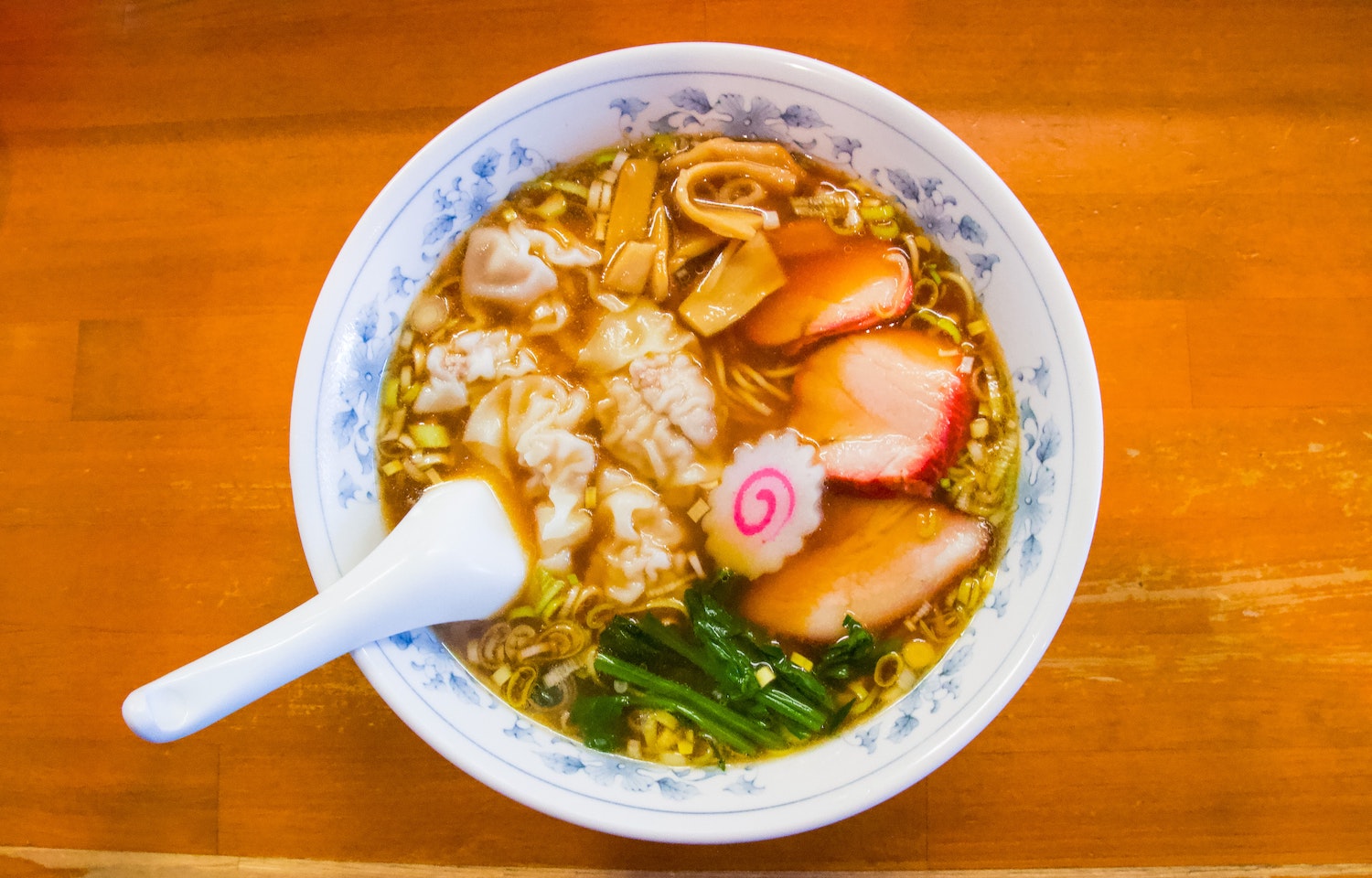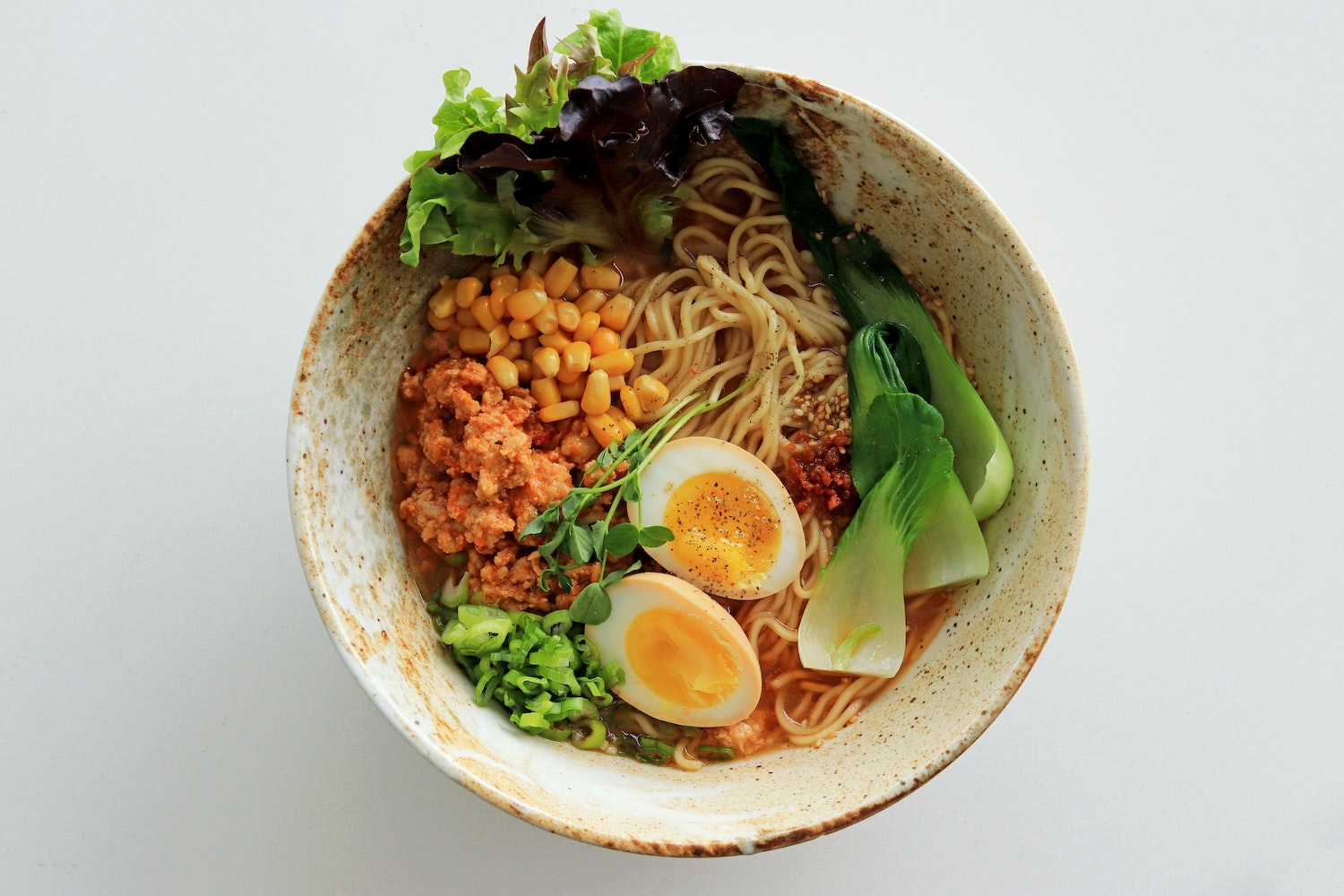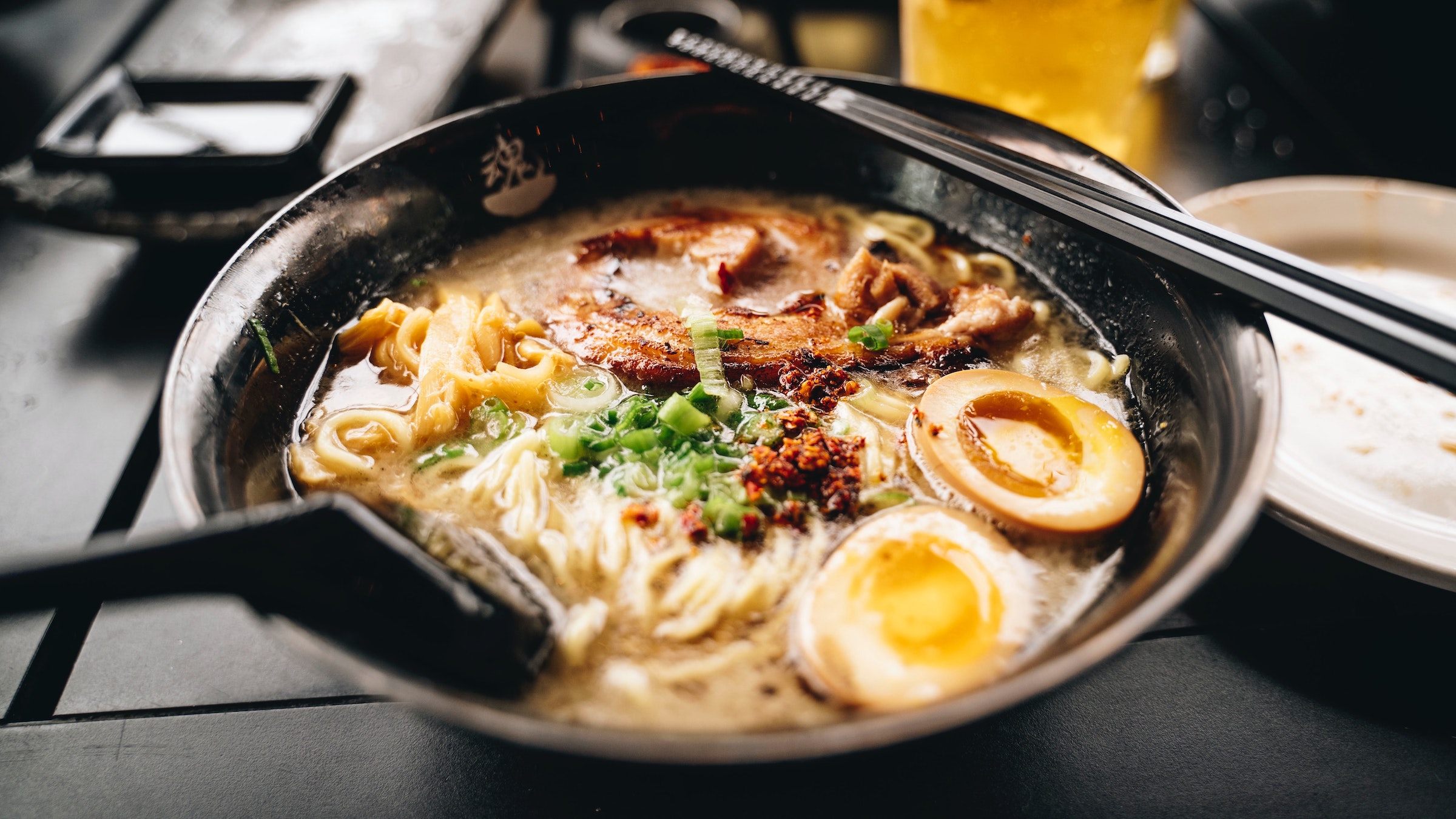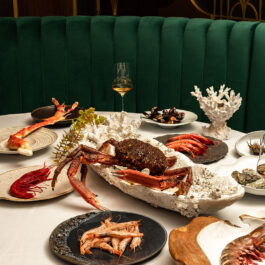On a dreary winter’s day, no dish can lift your spirits more than a steaming bowl of noodle soup. And no one makes a better one than the Japanese. As a classic, iconic dish, ramen has been endlessly discussed, studied and scrutinised, but let us boil it down to everything you need to know – and inspire you to start making your own.
The Story
Ramen’s reputation certainly precedes it. A Google search for ‘ramen’ will give you millions of results, while numerous books, movies, documentaries, blogs and even a museum have been devoted to the dish. In Japan, long queues form outside the best ramen shops, where famous chefs carefully guard their secrets.
Ramen is a Japanese adaptation of Chinese wheat noodle soups, which arrived in Japan with the influx of Chinese immigrants in the late 1800s. The dish evolved in Yokohama’s Chinatown, with the addition of Japan’s rich broths and typical Japanese ingredients such as seaweed and dried fish. The first-known ramen shop, Rairaken, opened in Tokyo in 1910.
After World War II, when the American military occupied Japan, the country dealt with immense food shortages. Though the US brought in cheap wheat flour to resolve the issue, the government food distribution system was falling behind. A ban on food vending was implemented to conserve rations, but a lot of people relied on black market vendors for their daily nutrition, many of whom sold ramen.
Ramen consumption really spiked when many Japanese soldiers returning from China started small noodle shops, after restrictions on food vending had been loosened, and it experienced yet another boost in popularity after Momofuku Ando, a Japanese-Taiwanese businessman, invented instant ramen in 1958, making it much simpler to prepare at home.
By the 1980s, ramen had become a culinary icon, with aficionados seeking out local variations and praising individual chefs’ skills (who would even earn Michelin stars). Ramen has become as synonymous with Japanese food culture as fresh baguette is to French cuisine, with more than 30,000 ramen-yas, or ramen shops, spread across Japan. Ramen culture went international, too – and not just the instant version.
The Definition
In essence, ramen is soup + noodles + toppings. The way its aromas, flavours, textures and temperature work together constitutes great ramen, regardless of its style.

The broth generally has a base of chicken or pork, fresh or dried seafood and other flavouring ingredients. Ramen’s base seasoning, a secret sauce of sorts, is called tare. This can be shio, or salt, which creates a clear ramen with a light, nuanced flavour based on any combination of chicken, vegetables, fish and seaweed. Shoyu is a soy-sauce-based tare, which results in a dark brown, clear soup with a tangy, umami-rich flavour. When miso (fermented bean paste) tare is added, it lends the broth a milky look as well as rich, umami notes that are slightly sweet and nutty. This kind of ramen originated on the northern island of Hokkaido, where it is the perfect food for the region’s harsh winters.
While these three types of ramen are classified according to their tare, tonkotsu ramen is based on its kotteri broth (meaning ‘rich’), created by boiling pork bones for hours to achieve an opaque, milky look and a deep, buttery pork flavour. This broth is already so complex it doesn’t require an additional tare. Tonkotsu ramen originated on Kyushu island in southern Japan.
The Noodles
Ramen noodles can be thin or chunky, pale white or deep yellow, depending on their ratio of wheat flour to kansui, a type of alkaline solution with sodium carbonate and, usually, potassium carbonate. These alkaline salts give the noodles their typical springy, chewy texture.
While restaurants tend to make their own fresh noodles, it’s common to use dried noodles when making ramen at home. Whether you use fresh or dried, avoid overcooking the noodles, and be sure to shake them off well before adding them to the bowl, so as to not dilute the broth with the noodle water.
The Toppings
Common ramen toppings are chāshū (thinly sliced braised pork belly) or kakuni (a more thickly sliced pork), nori (dried seaweed), menma (lacto-fermented bamboo shoots), scallions, ajitama (flavoured egg), kamaboko (steamed fish cake) and bean sprouts.
Ultimately, however, ramen is a dish where innovation and creativity are encouraged rather than frowned upon. Many chefs bring their own magic touch, such as celebrated chef Kazumoto Ochiai who adds deep-fried red onion flakes. For the adventurous or easily bored eater, there are many weird and wonderful ramen varieties in Japan.
To finish it all off, most bowls of ramen get a drizzle of aromatic fat on top, such as chilli or garlic oil, or a bit of chicken fat.
Make It Yourself
Preparing a satisfying bowl of ramen at home isn’t as daunting as it may seem: it just takes time, high-quality ingredients and a lot of attention to detail.
A good way to approach a DIY ramen project is to break it down: make a large batch of broth one day, braise some chāshū the next, and make your tare and other toppings the day after that.

“I find that spreading out the work prevents this process from being too overwhelming,” writes Mike Satinover – aka “Ramen_Lord” – in his free cookbook, The Book of Ramen. “Ramen is designed to be prepared in advance anyway, with most of the components improving as they mature over time in the fridge.”
Buy a Japanese brand of pre-made noodles if making your own seems daunting at first. After you’ve mastered a recipe that you’re satisfied with, you can start playing around with ingredients, toppings and flavourings until you have a version that completely satisfies your palate.
For a shoyu ramen recipe that’s easy to follow, look to TV chef Marion Grasby. While Japanese ramen chefs often don’t roast the chicken first, it adds a bit of depth of flavour.
If you’re looking to try your hand at a Tonkotsu Ramen, then culinary phenomenon Babish presents you with the full recipe.
How To Eat Ramen
Although ramen is almost a religion among devotees, it is still a very casual dish. There are no rigid rules or customs surrounding it, and you can eat your noodles and soup any (messy) way you like. However, there’s one thing you should remember if you want to eat your ramen the ‘proper’ way: don’t forget to slurp.
There are multiple reasons for this noisy practice. For one thing, you should be eating your ramen as fresh – read: hot – as you can manage, because the noodles will slowly start to become soggy in the broth. Slurping serves to cool down your soup as you eat it, while also helping you take in both broth and noodles in the same bite. Another added bonus is that slurping enhances the flavour as you suck in air, just like when you slurp wine while tasting it. Don’t worry about making noise, it’s considered a compliment to the chef!
What To Drink With Ramen
While a lighter, Japanese-style beer is often the drink of choice for many ramen lovers, plenty of other delicious pairings can be made as well. A delicate shio ramen, for instance, would find its match in a chilled, light-bodied white wine, such as a Muscadet or Pinot Grigio, a junmai sake or wheat beer. On the other hand, shoyu ramen needs something a bit more full-bodied and aromatic, such as a Grüner Veltliner or Chenin Blanc, dry sake or a sour beer. For a miso ramen, opt for a stout beer, an unoaked Chardonnay or a yamahai sake, and for a tonkotsu ramen, choose a robust companion, as the dish can easily overpower anything else. A Belgian double beer or a medium-bodied red wine with plenty of acidity, such as a Chianti, would work. And if you’d prefer a non-alcoholic option, a cold glass of green tea would do the trick.














Sorry, the comment form is closed at this time.